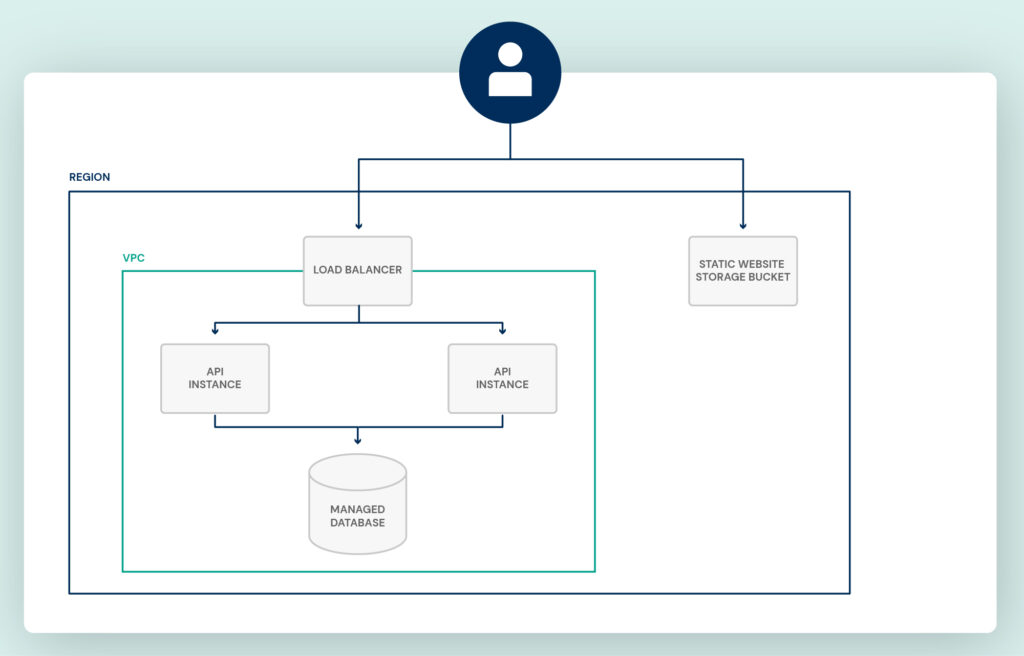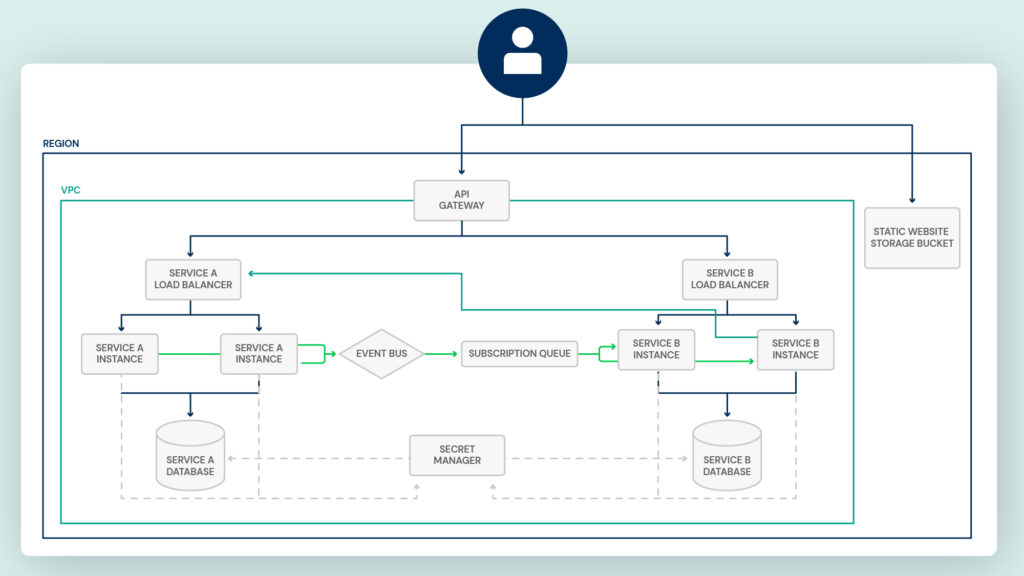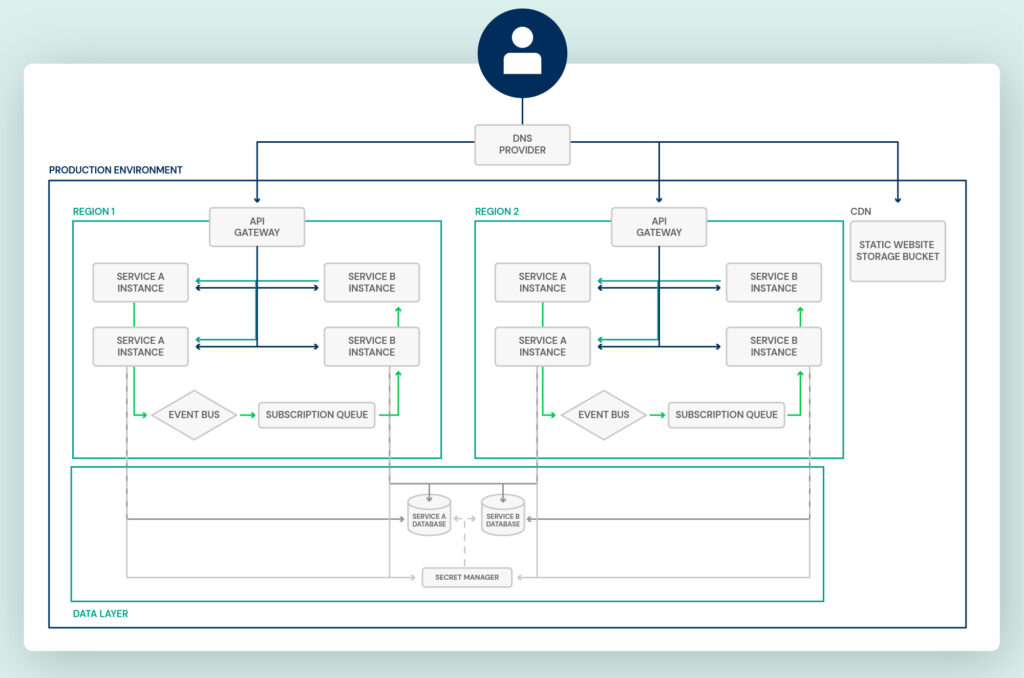A lot of work goes into designing and developing cloud applications and services – from the applications or services themselves to the infrastructure that supports them. Despite the rigor involved in the software development lifecycle (SDLC), the final step is always the same: production.
However, developers often conflate production-ready code with the production environment itself. A production environment is traditionally seen as where new software, features, or other updates are made available to users. This is where the end-user experiences the application.
In reality, there’s a lot that goes into the creation of production-ready code, and just as much goes into actually running it. In addition to the work crafting and testing the features, SREs, production engineers, and DevOps engineers are working tirelessly to build and rebuild the cloud infrastructure that will support the product and serve it to customers.
It’s the combination of the work of developers to write the application code and the work of SREs to serve it that creates the production environment – the true completion stage of the SDLC.
Teams almost never have enough SREs and DevOps engineers to go around, and this leaves them needing to take measures to balance the needs of the business with the resources they have available. They have to balance cloud spend and security risks while simultaneously enabling rapid feature deployment and satisfying the needs of customers, and at each stage of your business, the results of this trade-off are materially different.
In this post, I want to walk you through those trade-offs, and how to make the right decisions for your production environment and organization.
Production environments at different stages
Your production environment may be the main show, but not every show needs the same equipment or has the same audience size. Open mic night at the local pub only needs a microphone and happy hour pricing so that your friends will show up whereas a Broadway production needs a large auditorium, administrative staff to handle security and ticketing, costumes, choreography, and much more!
Both are live, production-grade performances, but you wouldn’t book a Broadway theater for your first show – not only would it be WAY too expensive, but it would be enormously time-consuming to plan and coordinate with all the different parties involved, you likely wouldn’t get back value commensurate to the expenditure of resources.
These trade-offs are identical to those made by startups when launching their product compared to enterprise companies. Enterprises have dozens of products and sometimes millions of customers, and startups are still looking for product-market-fit and their first few customers. With any luck, your startup will eventually be an enterprise business, but for now, it’s not worth your time to book the Richard Rodgers Theatre.
Production environments for startups

To be clear, there’s always the option to simply run your code on a single VM instance you get from your favorite cloud provider (e.g. an AWS EC2 instance or a DigitalOcean droplet). That will almost always be your easiest option as an indie dev. However, if you have ANY ambition of your project being used by an increasing number of users, there are a few things you should consider for even your earliest production environments to save you some pains you’ll face almost immediately:
- Scaling: At this stage you may not need to run more than one instance of your application, but you should know how. You’d hate to get a burst of traffic and have no path to support it. All it really takes is putting your application behind a load balancer and making sure that any in-memory data, like session info, is stored in Redis instead. Then you can log in to your cloud provider at any time and add a new instance to the load balancer.
- Ingress security: Security is an area that will change at every stage of your company, but for now it really just means enforcing SSL. You can easily configure your load balancer to handle SSL for you, and most providers will even help you create your certificates.
- Static sites: Had you asked me a few years ago, content delivery networks (CDNs) wouldn’t be on the radar at all for startup infrastructure. But there’s been an explosion of tools for building static websites, like Next.js, Nuxt, Gatsby, etc., that have made it easier and cheaper than ever to build and run high-performance websites. Pick your favorite and deploy to Netlify or Vercel which both have very favorable free tiers.
- Managed database: Last, but certainly not least, is your database. If there’s one thing you take away from this post, do not run your own database. Almost every cloud provider has a managed database solution that is reasonably cost-effective even in the early days but WAY more flexible when you inevitably need to scale it later. Databases are some of the hardest resources to change as you grow, so don’t take shortcuts.
Growth-stage production environments

If your early efforts at building your product and acquiring customers were successful, you’ve likely found yourself with a much larger team and some new problems to solve!
Now, you have too many developers to safely give out production environment credentials to everyone. You might also have burst usage of your product that demands more clever scaling. And if nothing else, your developers likely need to explore more complex architectural patterns. Here are a few things that are important to growth-stage companies for their production environments:
- Autoscaling: Once you reach a modest amount of scale, chances are that you’ll want to do some basic cost management. To accomplish this, you’ll need a stable way to package your application so that new instances can spin up automatically. You’ll also need a platform that can monitor compute usage like CPU and memory and execute scaling rules. The best in class answer to all of this is Docker and Kubernetes.
- Microservices: As you scale up, your developers are likely to find reasons to separate the product into multiple distinct applications. Perhaps because some features are being used sparingly and separation can save costs, but more likely because the tech stack selected on day zero isn’t the best one for a new feature (e.g. your new data science team needs to use Python and TensorFlow, but your original app is in Ruby on Rails). In any case, this influx of applications means you’ll need to consider how developers package and connect their applications together. Once again, the best-in-class answer is Docker and Kubernetes!
- Pub/Sub: If you’ve read anything about microservices, you’ve probably read that fault tolerance is a big problem. If your microservices are communicating and one request fails does the caller need to retry? Do they need to bubble up the error? What if too many requests crashed the service? This is where event sourcing or pub/sub gets introduced. Instead of calling APIs directly, developers can publish messages to one another that will get processed asynchronously. If one service is overloaded, it will simply respond more slowly instead of throwing errors.
- Secret management: When you and your buddy were the only ones building the product it was fine for you both to have the production DB credentials. But now you have more than one database, a handful of different applications, and dozens of developers. You’ll need better practices in place to protect application credentials while still ensuring that applications can use them to connect. Go grab AWS Secrets Manager or Hashicorp Vault, put the credentials in there, and configure the applications to read from the secret manager instead of expecting them to be passed in directly. Note: If you’re running on Kubernetes, I’d recommend using the External Secrets Operator to synchronize your secrets with your cluster automatically.
Enterprise production environments

Finally, you’ve hit the big time and have a thriving company with happy customers all over the world!
Your business has never been bigger, but big business means big problems. Regulation demands you deploy to multiple vendors, maintain strict controls and logs, and your users all over the world have lofty expectations for application performance.
- Client-side load balancing: As your application grows, load balancing needs scale linearly and ultimately become a significant part of your cloud spend. To prevent this explosion of cost, developers can use client-side load balancing and service discovery to enable each service to access peer instances directly. Instead of a dedicated load balancer, each service knows how to do load balancing without a proxy.
- Zero-trust security: Enterprise companies have not one but many products hosted in the same cloud environment. This means there are several points of entry into the cloud. A weakness in one can expose the entire environment to problems. Strict network policies and credentialing between services, even inside the cloud environment, is the next logical step of protection. Don’t assume you can trust any traffic without proper authentication.
- Multi-cloud: Global businesses have to account for users and regulations all over the world. Deploying your application to multiple regions or providers provides a better experience for users and is legally required in many cases so that data is co-located with your users.
Build an environment that will scale
Building and maintaining the infrastructure for a production-grade cloud environment isn’t easy. Most companies constantly re-evaluate their choices of tools and providers to ensure they’re balancing costs with security and ease of use.
At the enterprise level, entire software teams are devoted to helping developers create, deploy, and manage new applications in the cloud – often referred to as “platform engineering”. These teams act as supportive engineers to enable product and engineering teams to rapidly create, deploy, and secure cloud applications.
If you’d like to learn more about Architect.io, dependency management, and modern software deployment, please enjoy these resources from our blog:
- The importance of portability
- How to create microservices with Nest.js
- The basics of Kafka and Docker
- A developer’s guide to GitOps
- Dependency management for distributed apps
And as always, please follow us on Twitter and LinkedIn for the latest content and updates!

Add your thoughts